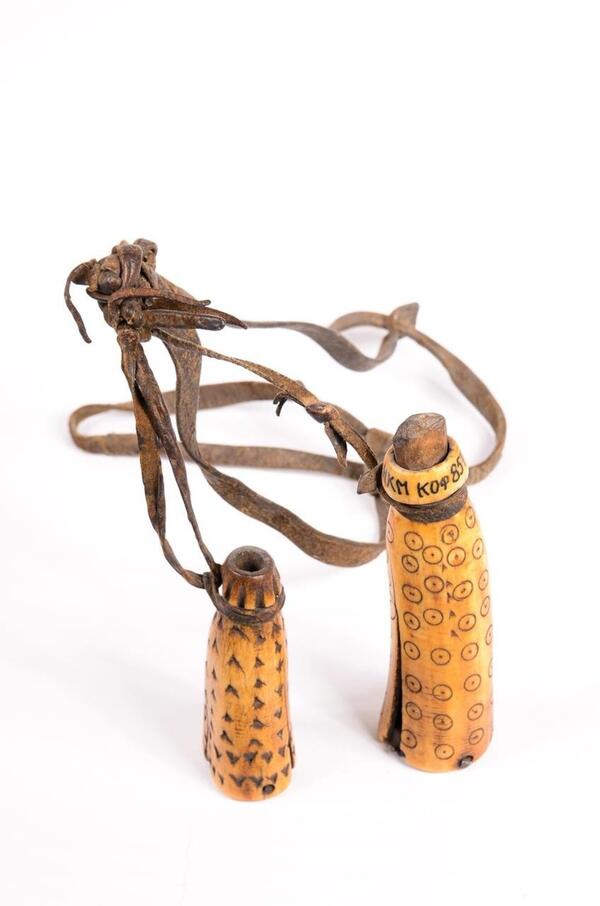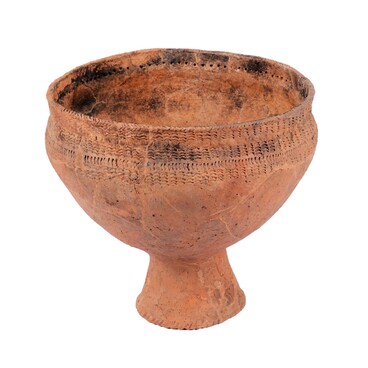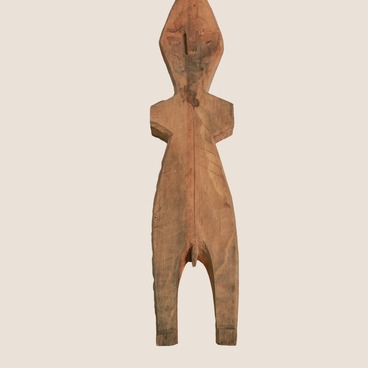In the 16th century, Western Siberia became part of the Russian state. Russian hunters received from the local population the knowledge necessary to survive in a harsh and still unexplored area, they learned how to get their own food. But they themselves had also contributed to the habitual way of life of the Ob-Ugrians, including cropping. The arrival of the Russians is associated with the spread of firearms in Siberia, which by the 19th century had practically supplanted longbows and crossbows of local hunters.
Firearms came into the use of the Ob-Ugrians gradually. Hunters with rifles killed more animals than with bows, and the sounds of shots frightened game away. Therefore, those who used traditional hunting methods reacted negatively to the innovations.
The first weapons were muzzle-loading and used gunpowder. Therefore a powder flask, a container for storing and carrying a small amount of gunpowder, became an obligatory attribute of a hunter’s equipment. In addition to it, the Khanty carried measures for gunpowder, bags for wads, bullets and pellets.
There were several types of powder flasks: round wooden ones and vessels made of cow horn. Studies showed that, despite the availability of wooden devices, the Khanty continued to make powder flasks from the horns of their domestic reindeer. The flasks were tightly closed with a cork and could be tied to the belt with thin leather straps.
The cost of gunpowder had always been high, so its storage and use was treated responsibly. Powder flasks were made light, comfortable and durable. Among all other hunting equipment they stood out by their graceful forms and special decorative design.
The powder flask from the funds of the Nefteyugansk History and Art Museum Complex was made in the 1990s. Horn, wood and tendon threads were used in its creation. The ornaments in the form of circles and triangles were applied to the product. The drawings were stamped. The object was found on the territory of an abandoned settlement located near the river Samsonovka.
Firearms came into the use of the Ob-Ugrians gradually. Hunters with rifles killed more animals than with bows, and the sounds of shots frightened game away. Therefore, those who used traditional hunting methods reacted negatively to the innovations.
The first weapons were muzzle-loading and used gunpowder. Therefore a powder flask, a container for storing and carrying a small amount of gunpowder, became an obligatory attribute of a hunter’s equipment. In addition to it, the Khanty carried measures for gunpowder, bags for wads, bullets and pellets.
There were several types of powder flasks: round wooden ones and vessels made of cow horn. Studies showed that, despite the availability of wooden devices, the Khanty continued to make powder flasks from the horns of their domestic reindeer. The flasks were tightly closed with a cork and could be tied to the belt with thin leather straps.
The cost of gunpowder had always been high, so its storage and use was treated responsibly. Powder flasks were made light, comfortable and durable. Among all other hunting equipment they stood out by their graceful forms and special decorative design.
The powder flask from the funds of the Nefteyugansk History and Art Museum Complex was made in the 1990s. Horn, wood and tendon threads were used in its creation. The ornaments in the form of circles and triangles were applied to the product. The drawings were stamped. The object was found on the territory of an abandoned settlement located near the river Samsonovka.



